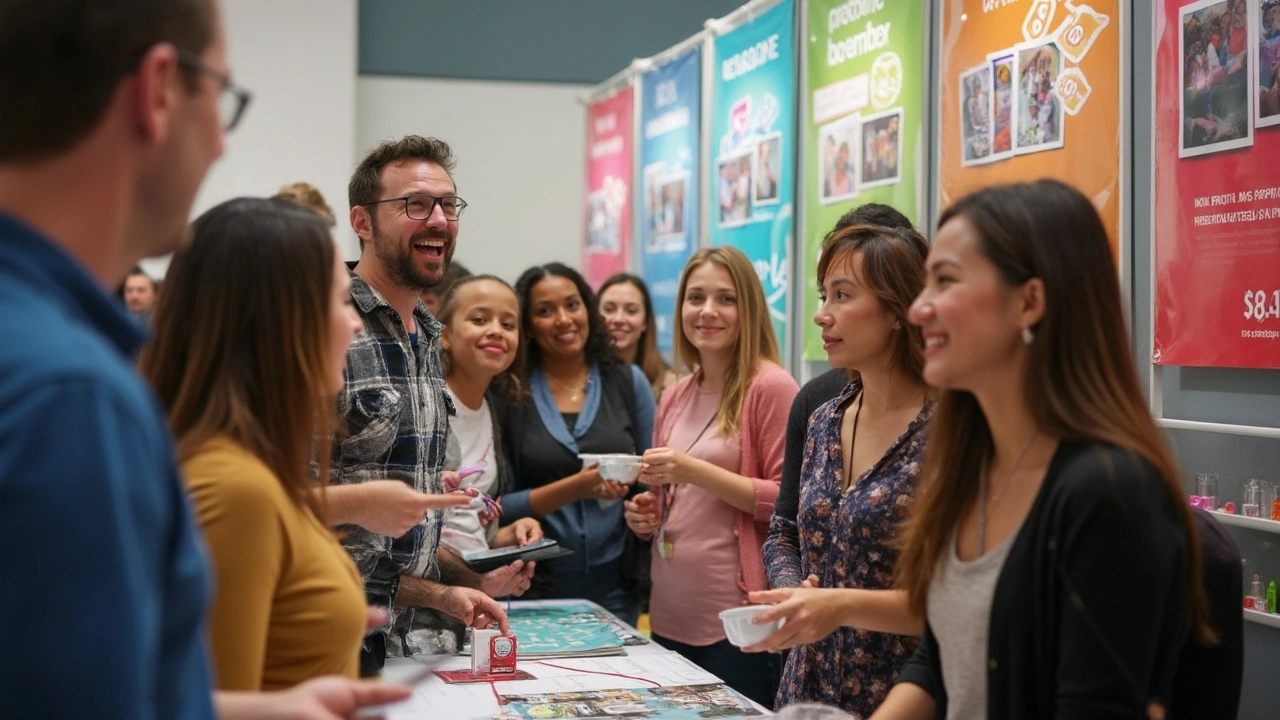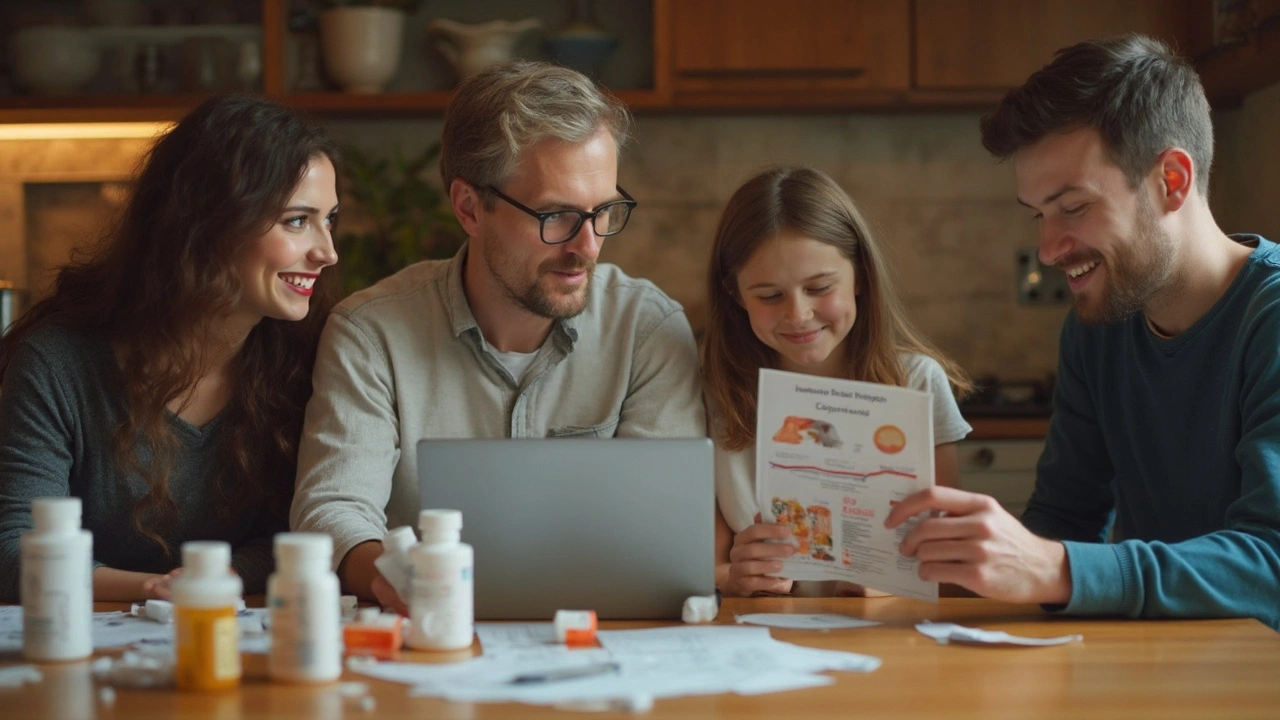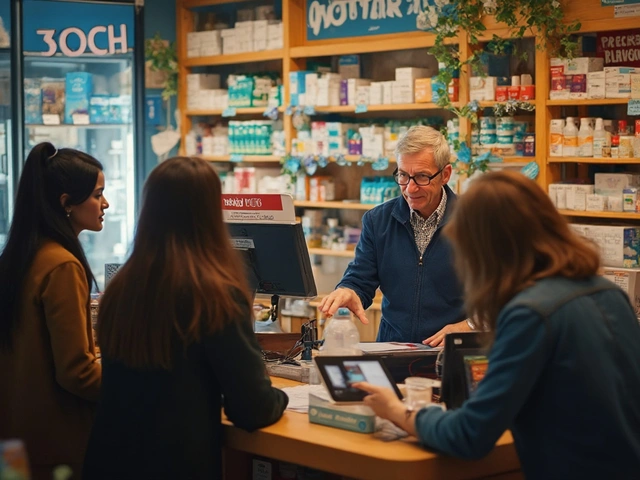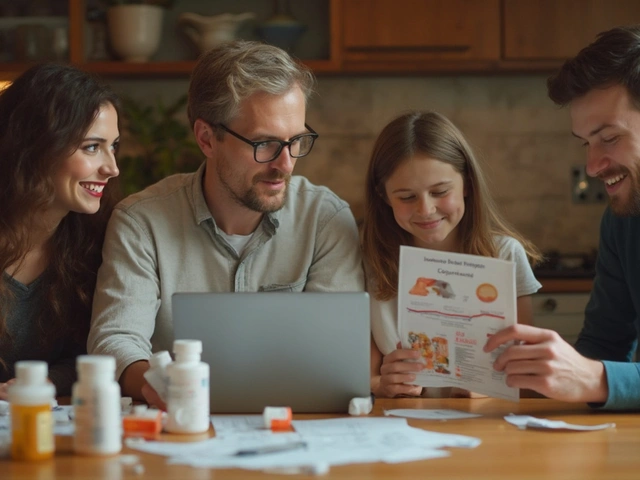Why Prescription Discounts Matter More Now Than Ever
Ask anyone who fills a prescription these days—prices are wild. Maybe you’ve stood at the pharmacy counter, blinking at a co-pay that’s doubled, or wrangling over which insurance plan won’t send you into sticker shock. My beagle Binky doesn’t need cholesterol meds yet, but for millions of Americans, pet or not, medication costs are nearing crisis levels.
The AARP says prescription drug prices in the U.S. increased more than three times the rate of inflation in recent years. Even with insurance, out-of-pocket costs can break the bank, with some people shelling out hundreds a month for vital pills. About 30% of adults admit to skipping meds because of cost. This is where discount programs step in, but not all savers are created equal.
You know about GoodRx, maybe even have their yellow card in your wallet. But new players—and not just for-profit ones—are popping up. Non-profits and creative membership clubs are offering fresh angles, helping people get the medicines they need without playing Russian roulette at the register. Some are zeroing in on low-income patients, while others are open to everyone. The key difference? Many of these programs don’t just help you save—they work to fix the broken system from the inside.
Let’s clear something up: discount cards, whether from GoodRx alternatives or membership plans, aren’t insurance. They just give you access to better rates, often negotiating directly with pharmacies. But the impact is real. In 2024, a family with three recurring prescriptions saved an average of $600 a year using competitive discount programs, according to a NerdWallet pharmacy survey.
This isn’t just about bottom lines, either. Skipping a prescription might mean a paycheck lost to illness or a hospital visit. Real savings can change the story. Below, we’ll put the spotlight on the programs quietly making a dent and give you the tips to squeeze every dollar when it comes to your pharmacy run.
Beyond GoodRx: Non-Profit Programs Giving Big Help
Non-profit prescription discount programs do things a bit differently. Instead of funneling profit to shareholders, their savings feed back into better prices, more outreach, or direct help for those struggling most. They might not have the big ad buys of for-profit giants, but they’re quietly becoming pharmacy heroes for people who know where to look.
One standout: NeedyMeds. Founded way back in 1997 by a doctor and a social worker, this non-profit is a goldmine of resources. Besides a broad discount card accepted at over 65,000 pharmacies, they keep up databases on patient assistance programs (those are the manufacturer freebies or deep discounts you hear about but rarely find), disease-specific support, and free/low-cost clinics. You can’t get coverage for pet meds—sorry Binky—but for humans, it’s a lifeline. According to NeedyMeds’ 2024 annual report, users saved over $200 million last year. If you need info in a hurry, their helpline is as real as it gets. Volunteers have even called local pharmacies for price checks on behalf of callers.
Another one making moves is Rx Outreach. This nonprofit pharmacy isn’t just passing along discounts—they’re a mail-order pharmacy. For many generic meds, especially for chronic conditions like asthma or diabetes, Rx Outreach sets one low price for everyone, no eligibility hoops. The program is especially generous for low-income users, but will fill for anyone. Their openness helped fill more than 400,000 prescriptions last year, and they’re transparent with prices—no fishing required. For folks without stable housing or with spotty transportation, the home delivery part is a win.
If you or someone you love is underinsured, check out the PAN Foundation or HealthWell Foundation. They don’t hand out prescription cards, but they offer copay, premium, and out-of-pocket assistance—sometimes to the tune of thousands of dollars—for people with specific chronic or rare diseases. Instead of haggling for $12 in savings, these groups can wipe out an otherwise impossible bill. Last year, HealthWell covered expenses for more than 173,000 people.
Even some state Medicaid programs are teaming with non-profits to reach folks who fall through the coverage cracks. States like Minnesota and Washington have announced pilot partnerships to send out co-branded cards to high-need groups. These aren’t perfect fixes, but for families who miss insurance deadlines or are between jobs, every bit counts.
Want every resource in one place? A detailed living list of other companies like GoodRx can be super handy if you’re serious about saving and want something ready for your next trip to the pharmacy.

Membership-Based Programs: Are the Upfront Costs Worth It?
This isn’t your granddad’s health plan. Membership-driven pharmacy discount programs are popping up everywhere, flipping the game on price transparency and personal service. You pay a monthly or annual fee, and in return, unlock a set menu of prescription prices. What’s the catch? You have to do the math to see if it beats your insurance or “free” cards.
One of the biggest is Costco’s Member Prescription Program. You don’t need to buy 500 rolls of toilet paper to get in on it—just be a member, and you and your family (including pets) can get access to negotiated prices. Some meds are so cheap even insurance can’t compete, especially for generics. Data from 2024 showed more than 15 million Costco members took advantage, saving hundreds per person compared to cash prices. The trick is you need to ask for the member price at the pharmacy window, so don’t be shy.
Walmart’s $4 Prescription Program, while not a membership as such, works similarly in spirit. For a set list of generics, it’s $4 for a 30-day supply or $10 for 90 days irrespective of your coverage. While the list isn’t as broad as it once was (about 100 common drugs left), loads of people with routine prescriptions—think lisinopril, metformin, or amoxicillin—see serious savings.
Mark Cuban’s Cost Plus Drugs disrupted 2024 pharmacy news with a clean, no-nonsense plan: Wholesale price plus 15%, plus a small pharmacy fee and shipping. That’s it. It’s open to everyone, no membership required, but its club-style simplicity is catching on, especially for uninsured or underinsured users. A diabetes patient who used the service in December paid $17 for monthly insulin—the very same one that cost $148 at the local chain pharmacy. That’s not a typo. Mark Cuban’s company is now working with unions and employer groups to roll out even deeper savings as a true membership perk.
Even Amazon has jumped in, with its subscribe-and-save model for Prime members. Their RxPass covers over 80 generic meds for a flat $5 per month for Prime subscribers (but only if you’re not using insurance). Their rapid mail delivery suits those sick of waiting at chain store counters, and many report monthly savings in the double digits for common maintenance meds.
Membership isn’t for everyone. If you only fill two or three scripts a year, sticking to free non-profit options may be smarter. But families with chronic conditions or folks on weekly refills often find the break-even point is only a month or two. Always call your pharmacies and check: sometimes, the best deal is what they’ll give you on the spot. Bring a list of your programs and cards—it’s zero trouble for pharmacists to run multiple options.
Tips and Hidden Tricks for Maxing Out Savings
Now, here’s where the money-saving magic happens. Everyone knows to shop around, but not everybody knows you can stack savings—even if you have insurance. Let’s clear up some myths and give you actionable ways to keep as much cash as possible in your wallet.
- Ask for the cash price: Sometimes, the “discounted” price beats your insurance copay, especially for generics. Pharmacies aren’t allowed to tell you this unless you inquire. Put them on the spot—in a friendly way!
- Check independent pharmacies: Not all deals live at big box stores. Local mom-and-pops can surprise you with lower rates, especially if they participate in non-profit or regional discount programs. Some even honor GoodRx alternatives and smaller program cards—just ask.
- Switch to 90-day supplies: Most programs give a bigger discount if you fill a 90-day script instead of 30. That’s less hassle for you, and it can drop your per-pill cost significantly.
- Patience pays off: Sometimes, prices change by the week. Don’t be shy about checking different programs every refill—algorithms and deals shift constantly. My neighbor once saved $22 by swapping cards the morning she picked up her blood pressure refill.
- Apply for patient assistance: Manufacturer programs sound complicated but can erase entire bills. If you have a diagnosis like hepatitis C, certain cancers, or rare diseases, patient assistance programs cover up to 100% of costs for those meeting income or insurance criteria. NeedyMeds and RxAssist both list active offers.
- Use state programs: Don’t forget SNAP-connected or state-based options. A lot of state-run health programs hand out free discount cards to residents, and these sometimes unlock local independent pharmacy specials. Never hurts to Google “[your state] prescription discount card.”
- Double up professionally: Pharmacists don’t mind running multiple discount cards to see which produces the lowest price. You can’t combine them, but you can compare before buying. It works—I’ve watched them do it!
Want numbers? According to the National Community Pharmacists Association’s 2024 study, people who used both discount programs and medical advice from independent pharmacists reduced their total medication costs by up to 38%. That’s a real statistic, not marketing talk, and could mean a full tank of gas or three bags of groceries.
Got a high-deductible health plan? Use your card or app to find the steepest discount, then pay cash—but save the receipt in case it counts toward your deductible. More and more insurers now let you submit these out-of-pocket costs for credit toward your annual spend.
Finally, don’t get discouraged. If your first pharmacy says they don’t accept a certain program, try another one nearby. Competition has made pharmacies more willing than ever to honor different cards (even the smaller or non-profit ones), especially with customers fanning out. Tell your friends and family what worked—you’d be surprised how often a tip from a neighbor beats the fanciest app features.

What’s Ahead: The Future of Affordable Meds in America
With prescription prices rising and the old insurance models struggling to keep pace, Americans are finding power in options they never knew existed. Non-profit and membership-based programs are gaining real traction—not just among those with tight budgets, but for anyone sick of unpredictable pharmacy bills.
Some insiders think drug pricing transparency is about to jump far ahead, especially as companies like Cost Plus Drugs put pressure on traditional chains. Meanwhile, tech giants are rolling out apps that instantly compare dozens of pharmacy prices, eliminating the old guesswork. Imagine standing at the counter, comparing live prices, and picking the best deal each time. The balance of power is shifting toward the consumer, and programs for affordable meds in the USA are leading that charge.
The next wave? Look for hybrid models, mixing non-profit roots with club convenience and AI-driven price bots. As more Americans discover these options, expect even broader drug lists, better outreach for chronic disease care, and more state-level support for smaller neighborhoods. Watch for pharmacies to lean into these relationships—not just for profit, but to keep customers who now have real choice.
Here’s a practical tip—make a short list of your regular meds, check out at least two new programs in the coming month, and compare what you pay now. The savings might surprise you, and you could help fix a system that’s been broken for far too long.
Binky hasn’t needed any vet meds yet (knock on wood), but when he does, you can bet I’ll look up every option before paying up front. If a beagle’s tail can wag for a good deal, maybe yours will too.




Emilie Bronsard
May 1, 2025 AT 08:06John Bob
May 2, 2025 AT 07:48Alex Grizzell
May 2, 2025 AT 18:05George Johnson
May 2, 2025 AT 18:19Rodrigo Ferguson
May 3, 2025 AT 10:38Mickey Murray
May 3, 2025 AT 22:51Marcia Martins
May 4, 2025 AT 03:21Robert Bowser
May 4, 2025 AT 15:02Sue M
May 5, 2025 AT 08:31Rachel Harrison
May 5, 2025 AT 23:42Tiffanie Doyle
May 6, 2025 AT 14:08james landon
May 7, 2025 AT 14:01Jenn Clark
May 8, 2025 AT 03:32L Walker
May 9, 2025 AT 02:34Kent Anhari
May 9, 2025 AT 06:42Charlos Thompson
May 10, 2025 AT 00:10Peter Feldges
May 10, 2025 AT 14:59Richard Kang
May 11, 2025 AT 10:25Rohit Nair
May 11, 2025 AT 16:23